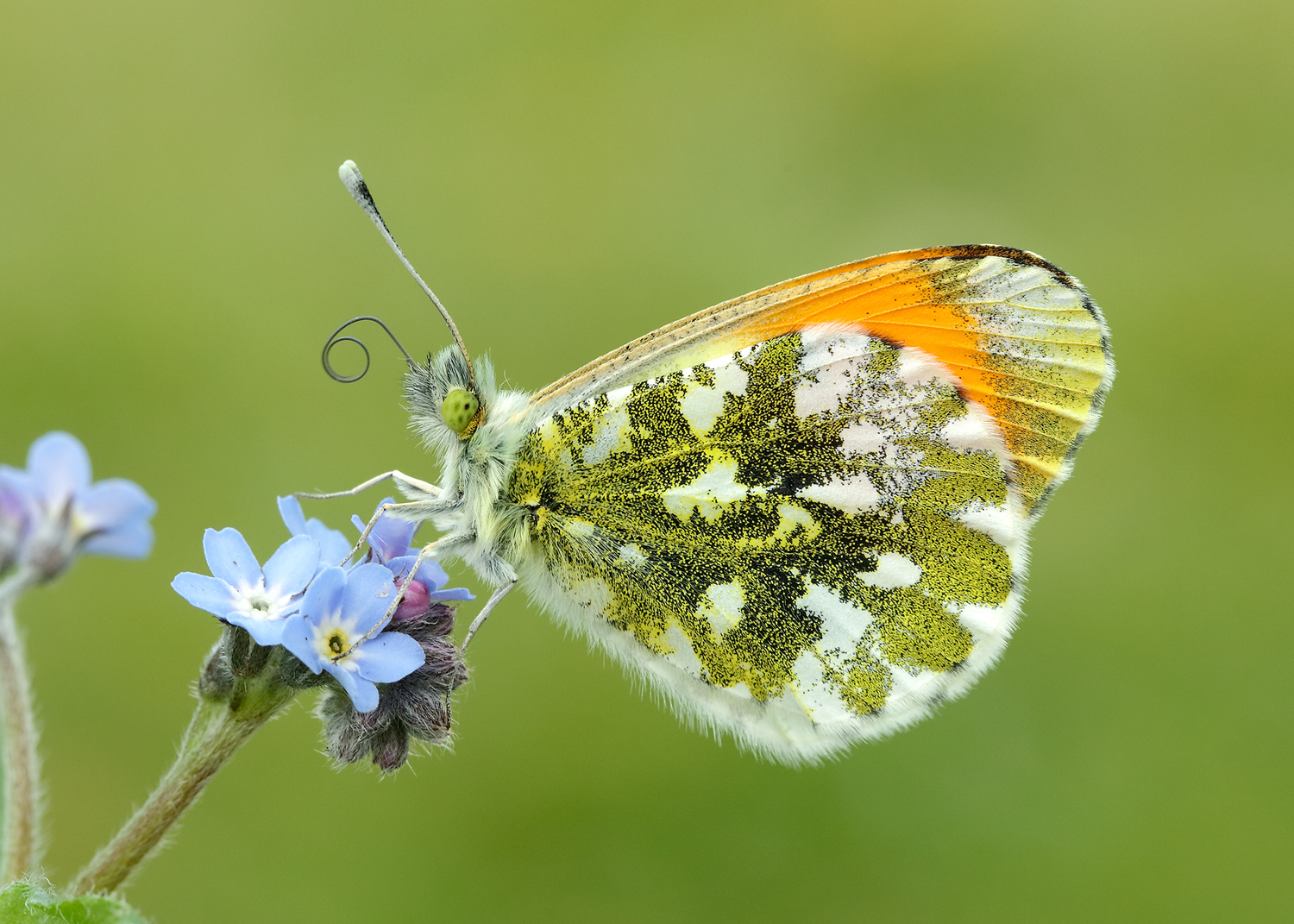Bulbs for bees and butterflies
In October and November you can plant bulbs to attract pollinators to your garden in the spring. The flowers will provide a valuable source of nectar for bees and butterflies emerging from hibernation.
For best results plant the bulbs in well-drained but moisture retentive soil, in full sun to light shade.
Most bulbs are planted twice as deep as the bulb is high and the same distance apart. In most cases, the pointed end of the bulb should be upwards but if in doubt, plant the bulb on its side.
Bulbs can be positioned closer together in pots than in flowerbeds but there should still be space between them. Additionally, keep bulbs away from the sides of the pot where there are extremes of temperature and dryness.
Creating a ‘bulb lasagne’ for butterflies
 You can layer bulbs in a container so they flower in succession from February to July. Depending on the particular species chosen, you could have Crocus in flower in February/March, followed by Grape Hyacinth in March/April, Tulip in April/May, Allium in May/June and Nectaroscordum siculum in June/July.
You can layer bulbs in a container so they flower in succession from February to July. Depending on the particular species chosen, you could have Crocus in flower in February/March, followed by Grape Hyacinth in March/April, Tulip in April/May, Allium in May/June and Nectaroscordum siculum in June/July.
Generally, the largest and latest flowering bulbs go in deepest and the smallest and earliest in the top layer. Growth from the bulbs in the lower layer will bend around anything above them. Each layer of bulbs should be covered with enough compost for the next layer to root in.
On the surface of the pot you can put low-growing, long-flowering plants such as violas, pansies and primulas. These come in a huge variety of colours, such as white, yellow, lavender, blue, and pink, which can be chosen to complement the bulbs. They will cover the bare soil and provide flowers and interest before, during and after the bulbs come into bloom.
A pot with three layers could contain plants such as:
- Bottom layer (10-15cm deep): Allium or Tulip.
Allium atropurpureum has dark purple, spherical flower heads on 60cm stems.
Tulip Angelique has pretty, pink, peony-like flowers, 45cm high.
- Middle layer (5cm deep): Crocus, Grape Hyacinth and Nectaroscordum siculum.
Crocus ‘Romance’ has cheerful, bright yellow flowers, 8cm high.
Grape Hyacinth Muscari armeniacum is popular with butterflies such as Comma, Peacock, Orange-tip and Small Tortoiseshell. Muscari ‘Valerie Finnis’ has cone-shaped spikes of fragrant, light blue flowers, 15cm high.
Sicilian Honey Garlic Nectaroscordum siculum is an ornamental onion with hanging, creamy-coloured, bell-shaped flowers on 90cm stems.
- Surface: Violas, pansies and primulas.
Bulbs in containers should be watered after planting and then checked regularly and kept moist but not wet. If there are hard frosts over winter you might need to insulate the pot with some bubble wrap around the outside.
After flowering, deadhead and then allow foliage to die back naturally as the leaves need to generate food to be stored in the bulb allowing the creation of the following year's flower
Many bulbs can be left in the ground permanently but some, such as tulips, are best lifted each year after the foliage has died down and at least six weeks after flowering. They should be dried and stored in a cool place, ready for planting again in the autumn.
Let us know your favourite bulb combinations for pollinators.
Happy gardening!
The Secret Gardener


